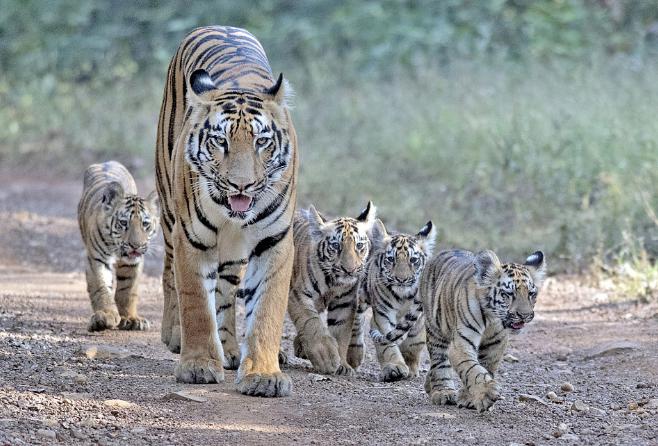Ecological Hotspot All Set To Be Ravaged By Railways
A speeding train running through the core area of Sanjay Dubri tiger reserve hit the tigress while the big cat was crossing the track. As the tigress was hit from the back, her tailbone and one of the back legs were broken. Post mortem performed on March 18 also revealed there was a lot of internal bleeding leading to death. Though this is the first tiger death on the railway track, as many as 50 wild animals including bear and hyena had died during the last 12 years. After her death, the four small cubs had been missing. A wildlife paradise, Sanjay Dubri national park is located in Sidhi district of MP housing as many as 22 tigers and 14 cubs. Birthplace of Mohan, the famous white tiger of erstwhile Rewa state, this reserve is an important tiger corridor and part of the Bandhavgarh-Sanjay-Guru Ghasidas-Palamau landscape of over 25000 sq km with a current tiger population estimate of 74 tigers.
Also read: Tiger Corridor : Now Satpuda Melghat National Parks Connectivity At Risk
It has been identified as one of the four potential tiger meta-population landscapes whose corridor connectivity has become fragile requiring intervention of policy and restoration for functioning as effective wildlife corridors. Apart from tigers, the reserve also provides shelter to wild elephants that frequent the Mohan range. The entire area along with the surrounding forests and the connectivity has a tremendous potential to become an important source population of tigers. But the railway project has jeopardized the paradise of Sanjay Dubri. There is already a 52 year old railway track right inside the national park covering 29 kms of the jungle. This includes over 27 km long railway track inside the core area of the tiger reserve. A train while running on the same track had killed the tigress T-18 on March 17. Now the Indian railways intend to expand the track by laying another track parallel to this existing railway line .
Centre Already Cleared The Project
Land With Railways, Neither Transferred Nor Denotified
In 1969, when the railway track was laid down, the railways also purchased the land. Though the railways owned the land, it was neither transferred to Indian Railways nor was it de-notified, forest department sources claimed. Few years later in the early eighties , two sanctuaries – Sanjay Gandhi wildlife sanctuary and Dubri sanctuary came into existence and later both were combined to form a tiger reserve in 2006. Right from the beginning, there has been a demand by the forest department to shift the railway track outside the park. In the absence of any under or over passes along the tracks, wild animals have been killed regularly from the trains including three passenger trains and one long-goods train comprising as many as 120 bogies.
Also read: Avni's killing: Core Issue of Tiger Corridors Lost in Oblivion
Laden with coal, the train is pulled by three engines and takes more than 2 hours to cross the forest . As it blows horns, screeches, rattles and rumbles pass across the jungle , the wild-animals run for their life. The forest department requests the railways to take both the tracks outside the jungle from Madwah to Majhauli stations. National wildlife board has constituted a committee comprising officials of National Tiger Conservation Authority, Wildlife Institute of India (WII) and Additional Principal Conservator of Forest (APCCF) Wildlife from MP.
Representational banner image: courtsey CGTN, Amrut Naik/Solent News.Other Pics Courtsey: Sanjay Dubri national park





Comments
Post a Comment